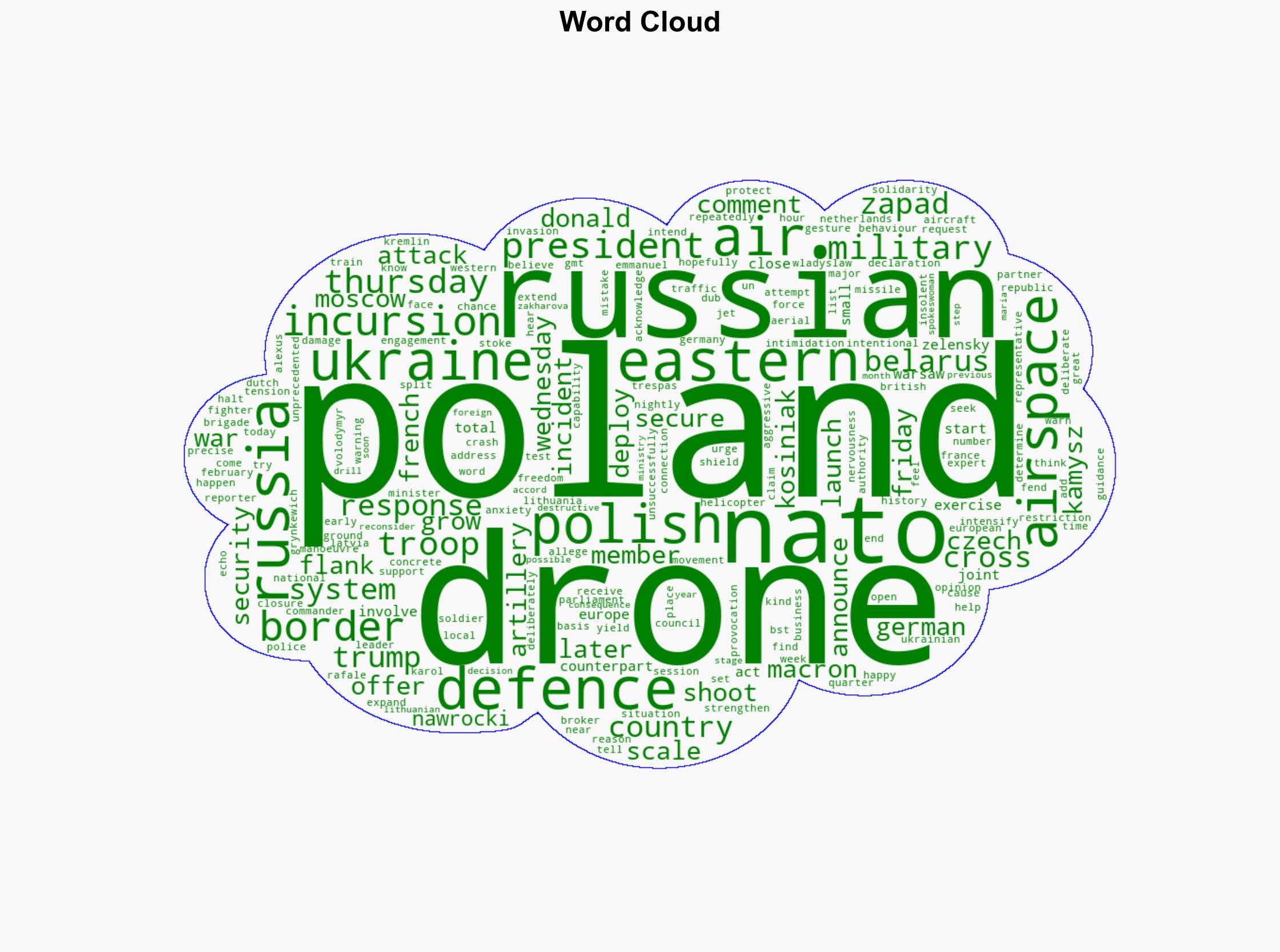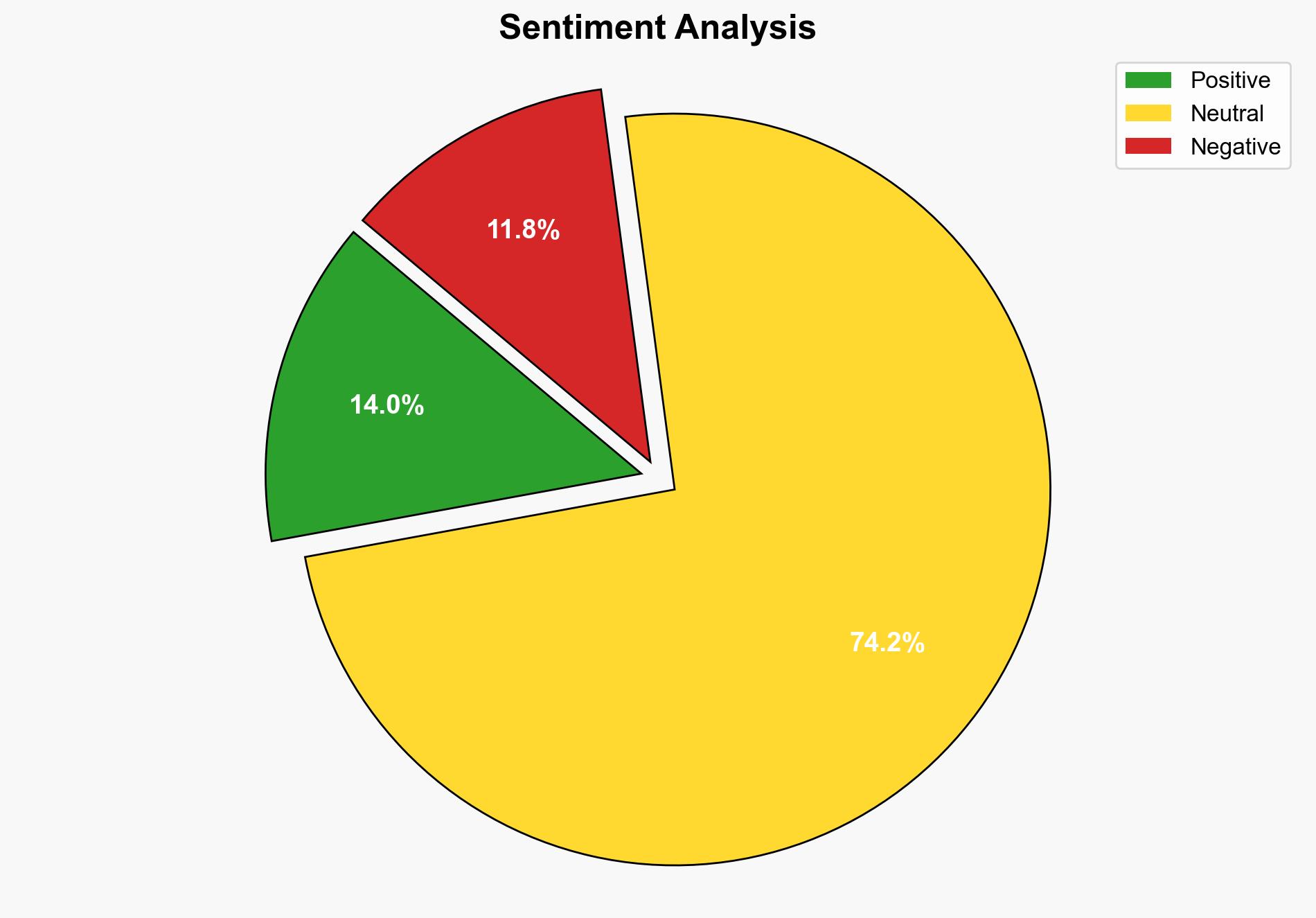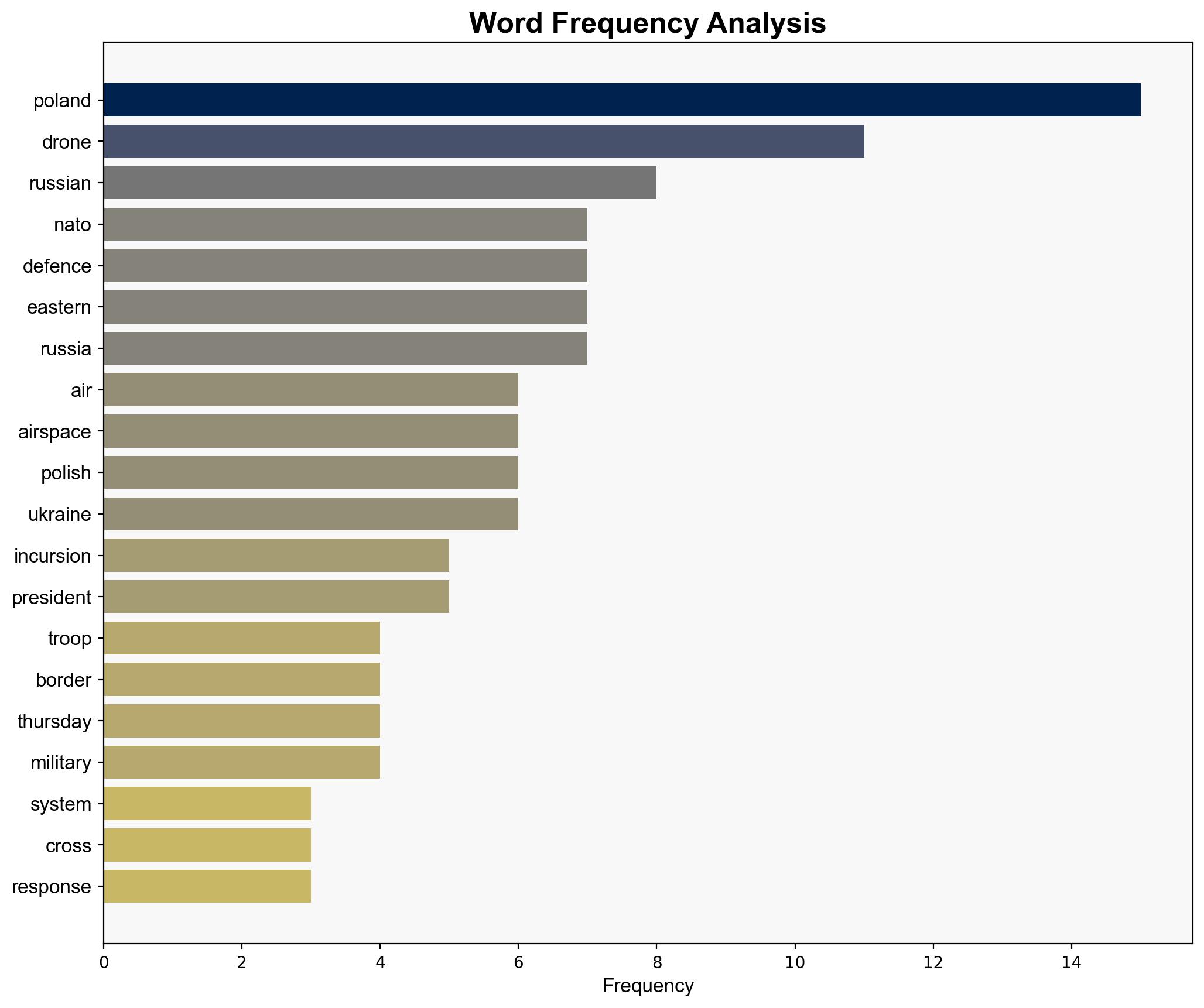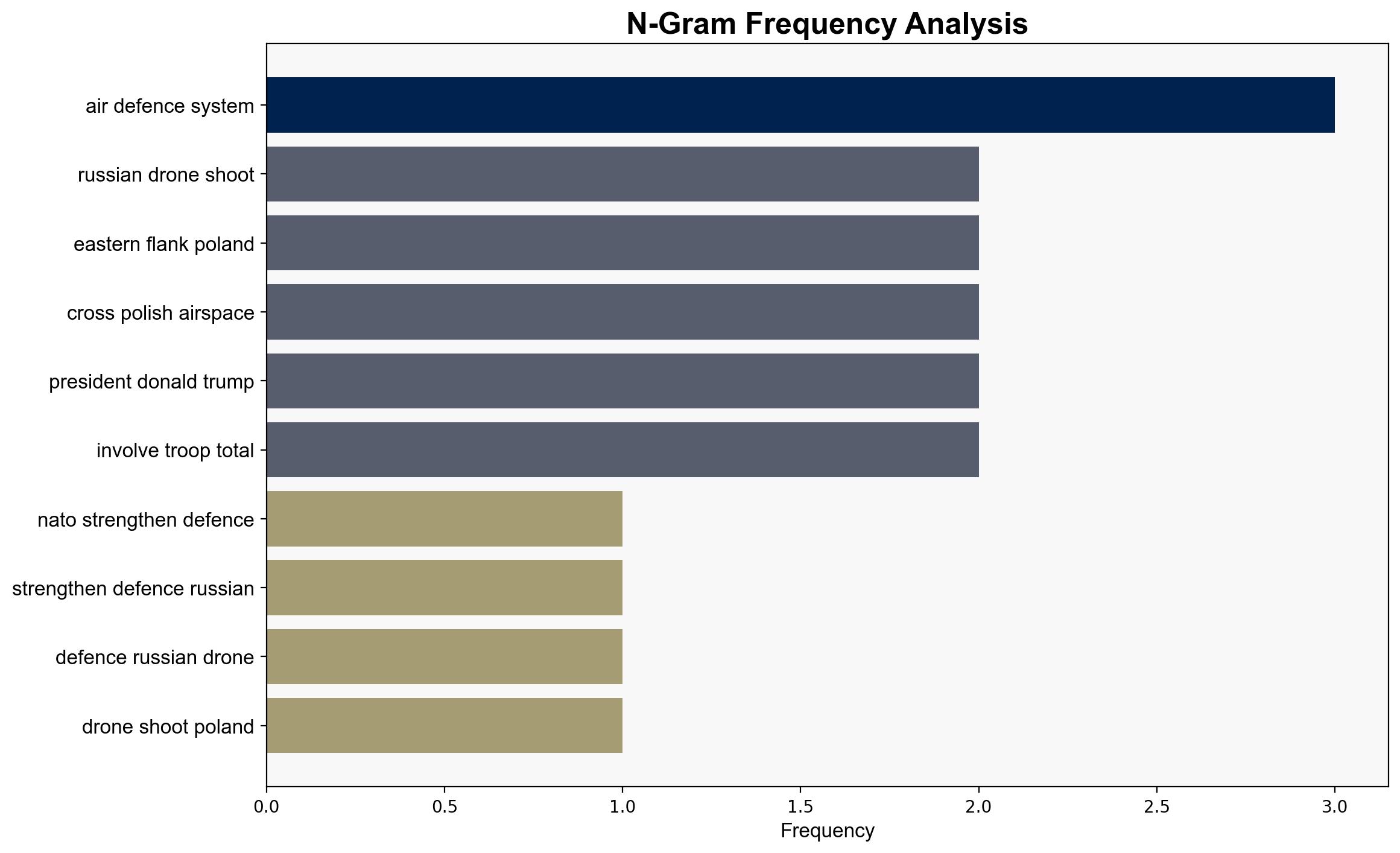Nato strengthens defences after Russian drones shot down over Poland – BBC News
Published on: 2025-09-11
Intelligence Report: Nato strengthens defences after Russian drones shot down over Poland – BBC News
1. BLUF (Bottom Line Up Front)
The most supported hypothesis is that the Russian drone incursion into Polish airspace was a deliberate provocation to test NATO’s response capabilities. Confidence level: Moderate. Recommended action: NATO should enhance intelligence-sharing and air defense coordination among member states to deter further provocations and reassure Eastern European allies.
2. Competing Hypotheses
1. **Deliberate Provocation Hypothesis**: The incursion was an intentional act by Russia to test NATO’s response and create instability along its eastern borders.
– Supported by the timing of the incident coinciding with joint military exercises and the historical pattern of Russian provocations.
– NATO’s rapid defensive response and statements from Polish and European leaders suggest a perception of deliberate aggression.
2. **Accidental Incursion Hypothesis**: The drone crossing was an unintended mistake due to navigational errors or miscommunication.
– Supported by Russia’s claim of no deliberate intent and the lack of immediate aggressive follow-up actions.
– The incident could be a result of technical malfunction or miscalculation during military exercises.
3. Key Assumptions and Red Flags
– **Assumptions**:
– Deliberate Provocation assumes Russia’s willingness to risk escalation with NATO.
– Accidental Incursion assumes technical or human error without malicious intent.
– **Red Flags**:
– Lack of detailed information on the number and type of drones involved.
– Inconsistent narratives from Russian and NATO sources regarding intent.
– Potential cognitive bias in interpreting Russian actions as inherently aggressive.
4. Implications and Strategic Risks
– **Escalation Risks**: Increased military presence and exercises could lead to miscalculations or accidental engagements.
– **Geopolitical Tensions**: Heightened tensions may strain diplomatic relations and complicate existing conflicts, particularly in Ukraine.
– **Economic Impact**: Prolonged instability could affect regional trade and investment, particularly if border closures persist.
– **Psychological Effects**: Continued provocations may erode public confidence in NATO’s ability to protect member states.
5. Recommendations and Outlook
- Enhance real-time intelligence-sharing mechanisms among NATO members to improve situational awareness.
- Conduct joint air defense drills to ensure readiness and interoperability.
- Engage in diplomatic channels to de-escalate tensions and clarify intentions.
- Scenario Projections:
– **Best Case**: Improved NATO coordination deters further provocations, stabilizing the region.
– **Worst Case**: Continued provocations lead to a military confrontation.
– **Most Likely**: Ongoing low-level tensions with sporadic incidents testing NATO’s resolve.
6. Key Individuals and Entities
– Emmanuel Macron
– Donald Trump
– Wladyslaw Kosiniak-Kamysz
– Karol Nawrocki
– Maria Zakharova
7. Thematic Tags
national security threats, cybersecurity, counter-terrorism, regional focus




